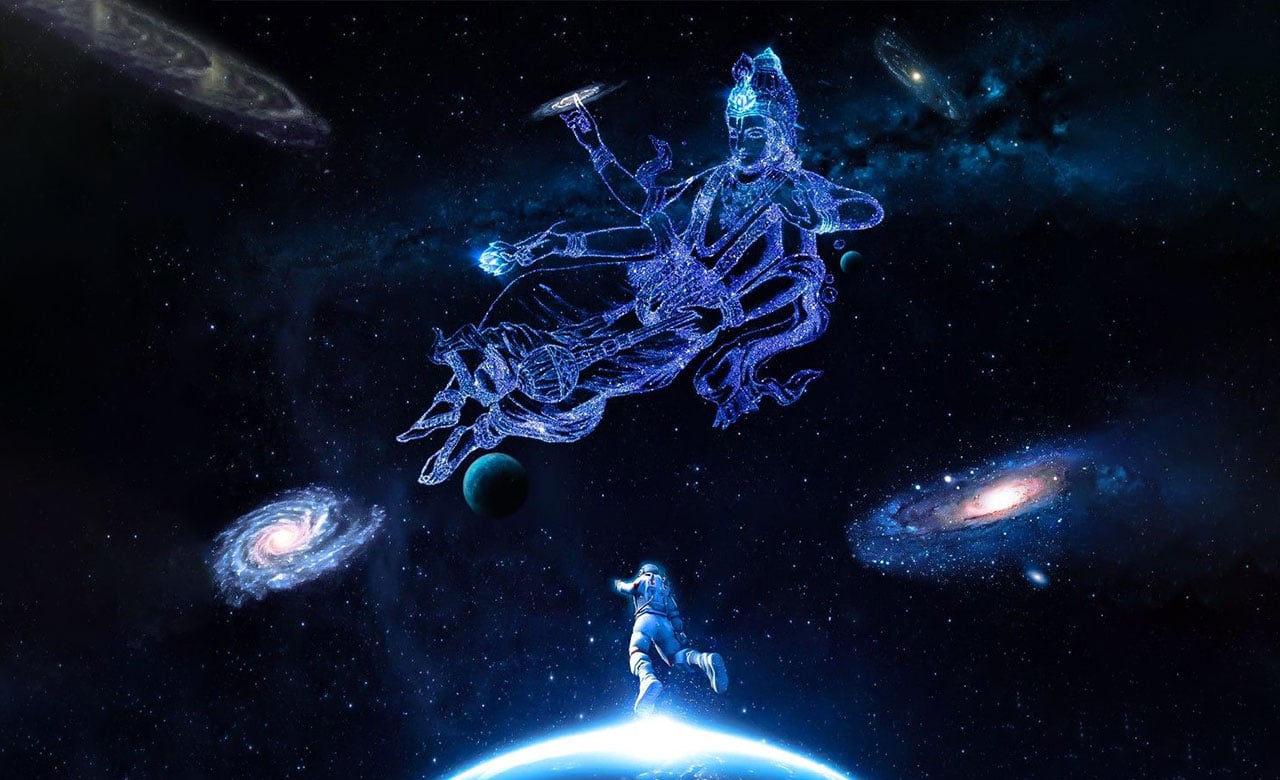
Informative
Understanding the Yugas (Ages)
As per Vedic Dharma, time undergoes infinite cycles instead of being linear as we see it. Every cycle is divided into four parts called Yuga, where humans develop different characteristics. In this blog, we will learn what Yugas are, their four types and what happens after.
What is Yuga?
Yuga roughly translates to the age or the epoch. But in Vedic Dharma, it means much more than that. According to the Vedic scriptures, this universe constantly undergoes a cycle of birth and destruction. One complete rotation of this cycle is called Kalpa.
One Kalpa is roughly four billion years old, and as we discussed earlier, is made up of four parts we call Yuga. These Yugas are Satya Yuga, Treta Yuga, Dwapar Yuga and Kali Yuga. It is believed that the first three Yugas already have been passed, and we currently are living in Kali Yuga. Each Yuga has different characteristics; let’s take a look at them one by one.
What is Satya Yuga – Age of Truth?
Called Sat Yuga, or the Krita Yuga, Satya Yuga means the age of truth. This is the age where Gods walk among the humans, while humans had god-like qualities in them. Therefore, humans will have the purest and the ideal behavior, leading to the most balanced, idealistic, and pious life in this Yuga. And hence, this Yuga is also termed as Suvarna Yuga or the golden age. Bhagwat Geeta says that in Satya Yuga, the Dharma will walk on its four legs due to these characteristics.
Ancient scriptures say that during this age, humans only perform good, sublime Karmas. Everyone treats another equally, and hence, there are no class and creed differences, leading to social turmoil. No human possesses excessive worldly desires or mal intentions of overpowering someone else, and hence, this age is considered the blissful age for humanity to thrive.
The first four Avataras (incarnations) of Lord Vishnu, namely Matsya, Kurma, Varaha, and Narsimha Avatara, arose during this age. There was no difference in heaven and earth in this age, as humans followed and idolized the gods. Because of the nature of the human being, following the Dharma, being virtuous, and being devoid of selfishness, they would effortlessly attain Nirvana, uniting with the Divine.
What is Treta Yuga?
Treta means third. Humans from Satya Yuga will be filled with virtues. But in Treta Yuga, three-fourths of the human subconscious will be filled with purity, and one quarter will be filled with sinfulness. The Yuga, represented by the three virtuous parts of human beings, is called Treta Yuga.
As one-quarter of the human mind will be filled with selfishness, greed, anger, and sorrow, this age will lead to clashes. Ancient Vedic scriptures note that many emperors will rise, fight and fall during these times. Gods will start to depart from the earth, making heaven their abode, and as a result, there will be a decrease in the virtues. Once pleasant weather in Satya Yuga will start to change into extremities. Bhagwat Geeta says that in Treta Yuga, the Dharma will walk only on three of its four legs due to the characteristics of human beings.
Lord Vishnu has acquired two incarnations, namely Vamana and Parashurama, to free the pious and virtuous from the clutches of evil in this age. This age is known as the age of the rise of evil. During the time of Vamana incarnation, the Demon he defeated was the pious one.
But, unfortunately, till his next incarnation arrived, the humans themselves have become like dreadful demons. The people who had duties to protect others themselves became the suppressors. Hence, Lord Vishnu had to take his next Avatara in the form of Parashurama, freeing the earth from the grasp of humans, behaving like the demons. Due to this reason, this age is known for the rise of evil on earth.
What is Dwapara Yuga?
The origin of the word Dwapar is Dwi, or two. It signifies that two pieces will be virtuous among the four parts of the human subconscious, and the rest two will be full of inequity and sinfulness. Thus, the ancient texts say that this age will be defined as the descent of humanity.
Even though humans will possess the sound characteristics of their ancestors, it will decrease the lifespan of human beings as a result of their sins and increased natural disasters. Moreover, since humans will have both Sattvik (pure and virtuous) and Rajasic (superlative) Gunas (characters), they will be susceptible to emotions, feelings, delusions, ego, selfishness, and pride.
Despite these weaknesses, humans will try to adhere to their virtues. The sacred text of Bhagvat Geeta says that humans will have both divine and demonic qualities. And hence, this ancient text says that in Dwapar Yuga, the Dharma will walk only on its two legs due to the behavior of human beings.
Being under the mal effects of ignorance and delusion, humans will start forgetting their moral duties and be greatly concerned about their selfish desires and worldly concerns. In this age, Lord Vishnu had taken two incarnations, Lord Krishna and Lord Buddha.
What is Kali Yuga?
This is considered the last Yuga in the cycle of time, where humans will have only one part of virtue, and the rest three aspects of their subconscious will be overflowing with the sins. And hence, the Dharma, standing on his four legs in Satya Yuga, will try to balance himself only on one leg.
Effects of Kali Yuga:
Ancient texts like Vedas, Puranas, Shastras, and Bhagvat Geeta go to a great extent while describing the effects of Kali Yuga. They have predicted the impact of Kali Yuga on human beings.
\
-Compared to their ancestors of Satya Yuga, humans will have a shorter life span, and they will be slaves to their carnal passions.
– In Kali Yuga, people will cut down trees without thinking twice.
-Only the wealthy people will be considered a noble birth, and money will decide justice.
-Courts will deprive the poor man of justice, who is incapable of bribing.
-People will forget their ancestors, and they will forget their parents as well.
-This age will be even tougher for the pious. Humans who follow Dharma will be known to have an even shorter life span than those who break it.
– Humans will get in like to have favors from the evil, and they will even rob the possessions of others, even from children and widows.
The country where guests are considered the Gods will be refused food and shelter and forced to sleep on the roads.
-Few of the Humans will follow Dharma, but only when there is fame in it.
-Powerful and not the virtuous will become kings, and it will be hard to differentiate between them and the robbers.
How should a Sadhak behave in Kali Yuga?
In Kali Yuga, there is very little hope in controlling our senses when we are being bombarded with mind-numbing overwhelming sensory stimuli. Therefore, surrendering to your Ishta is the only way to live a decent, fruitful, pious, and satisfying life in this age.
One must carefully choose the company with which he spends the time. People with solid morals and values help you to grow as a righteous person. Satsang, or being in the company of the saints, devotees, and scholars, is considered an invaluable treasure in Kali Yuga.
When life is so self-centric and rotating around worldly things, one must have more empathy and compassion towards the more unfortunate ones.
Dharma stands only on one leg; one must protect the Dharma with righteous behavior and empathy. Doing the duty without attachment to the fruits of Karma Yoga is the answer to the miseries one feels during Kali Yuga.
What happens after Kali Yuga?
According to the ancient scriptures, after the sins of men will reach the skies, Lord Vishnu will acquire the last incarnation Naming Kalki, and all the sinners will meet their fate. Lord Shiva will destroy the universe at the end of this Kali Yuga, and the entire universe will undergo a cosmic transition. Post that, Lord Brahma will recreate the universe, and Satya Yuga will begin once again.
With intense Sadhana and discipline, a true seeker can easily make his way through these challenging times. With the help of Guru, a Sadhak can acquire the lost self-knowledge by cultivating detachment from worldly possessions and by withdrawing all of his senses, his mind, and concentration towards the Divine within.
We hope this blog helps you to gain some insight into the concept of Yuga.
To stay connected and to receive information about spirituality, please subscribe to our mailing list. In case of any queries, please write to us at info@chamundaswamiji.com.
Post a Comment
-
Subscribe to Our Blog
-
Categories
-
Popular Articles
- Dead moth in the house. What universe is trying to tell you?
- Spiritual Meaning of Moth
- Vivah Bandhan Curse – What Is It and How to Spiritually Heal It.
- What are Beej Mantras?
- The Dasa Mahavidyas
- Tripura Sundari | The Dasa Mahavidya
- Maa Bhuvaneshwari | The Dasa Mahavidyas
- Ramakrishna Paramhansa – The Man who almost became a Woman
- The Five Shades of Tantra
- Maa Chinnamasta | The Dasa Mahavidyas



